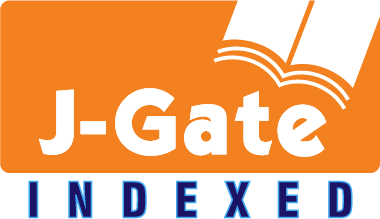Creativity in Mathematics
DOI:
https://doi.org/10.26809/joa.2018548641Abstract
The aim of this study is to discuss mathematical creativity and to reveal the relationship between mathematics and creativity.
Downloads
References
2. Aydoğdu, N. & Yüksel, Ġ. (2013). The relationship between prospective mathematics teachers‟ beliefs and attitudes towards history of mathematics and their creativeness level. Journal of Research in Education and Teaching, 2(4), 186-194.
3.Bessis, P. & Japui, B. (1973). Yaratıcılık nedir? (S. Gürbaşkan, Trans.). İstanbul: Reklam Ofset Tesisleri.
4.Birgin, O. & Baki, A. (2012). An investigation of the purposes of the measurement and assessment practice of primary school teachers within the context of the new mathematics curriculum. Education and Science, 37(165), 152-167.
5. Büyüköztürk, ġ., Kılıç-Çakmak, E., Akgün, Ö. E., Karadeniz, ġ. & Demirel, F. (2014). Bilimsel araştırma yöntemi, Ankara: Pegem Akademi.
6. Chamberlin, S. A. & Moon, S. M. (2005). Model-eliciting activities as a tool to develop and identify creatively gifted mathematicians. Prufrock Journal, 17(1), 37-47.
7. Chiu, M. S. (2009). Approaches to the teaching of creative and non-creative mathematical problems. International Journal of Science and Mathematics Education, 7(1), 55-79.
8. Ervynck, G. (1991). Mathematical creativity advanced mathematical thinking (pp. 42-53), Springer.
9.Fraenkel, J.R., Wallen, N.E. & Huy, H.H. (2011). How to Design and Evaluate Research in Education (Eighth Edition). Mc Graw Hill Companies: New York.
Haylock, D. W. (1987). A framework for assessing mathematical creativity in school chilren. Educational Studies in Mathematics, 18(1), 59-74.
10.Haylock, D. (1997). Recognizing mathematical creativity in school children. International Reviews on Mathematical Education, 29(3), 68-74.
11. Johnson, B. & Christensen, L., (2014). Educational research: Quantitative, Qualitative, and mixed approaches (Çev. Ed. Selçuk BeĢir Demir), Ankara: Eğiten Kitap.
12. Kattou, M., Kontoyianni, K., Pitta-Pantazi, D., & Christou, C. (2012). Connecting mathematical creativity to mathematical ability, 45(2), 167-181.
13. Kwon, O. N., Park, J. H., & Park, J. S. (2006). Cultivating divergent thinking in mathematics through an open-ended approach. Asia Pacific Education Review, 7(1), 51-61.
14. Laycock, M. (1970). Creative mathematics at Nueva. The Arithmetic Teacher, 325-328.
15. Lee, K. S., Hwang, D.-j., & Seo, J. J. (2003). A development of the test for mathematical creative problem solving ability. Journal of the Korea Society of Mathematical Education Series: Research in Mathematical Education, 7(3), 163-189.
16. Leikin, R. (2009). Exploring mathematical creativity using multiple solution tasks. Creativity in mathematics and the education of gifted students, 129-145.
17. Leikin, R. (2012). Creativity in teaching mathematics as an indication of teachers‟expertise. Paper presented at the 36th Conference of the International Group for the Psychology of Mathematics Education.
18. Leikin, R. (2013). Evaluating mathematical creativity: The interplay between multiplicity and insight. Psychological Test and Assessment Modeling, 55(4), 385-400.
19. Leikin, R., Berman, A., & Koichu, B. (2010). Creativity in mathematics and the education of gifted students. Rotterdam: Sense Publishers.
20. Leikin, R., & Lev, M. (2012). Mathematical creativity in generally gifted and mathematically excelling adolescents: what makes the difference? Zdm, 45(2), 183-197.
Downloads
Published
How to Cite
Issue
Section
License
When the article is accepted for publication in the Journal of Awareness, authors transfer all copyright in the article to the Rating Academy Ar-Ge Yazılım Yayıncılık Eğitim Danışmanlık ve Organizasyon Ticaret Ltd. Şti.The authors reserve all proprietary right other than copyright, such as patent rights.
Everyone who is listed as an author in this article should have made a substantial, direct, intellectual contribution to the work and should take public responsibility for it.
This paper contains works that have not previously published or not under consideration for publication in other journals.










